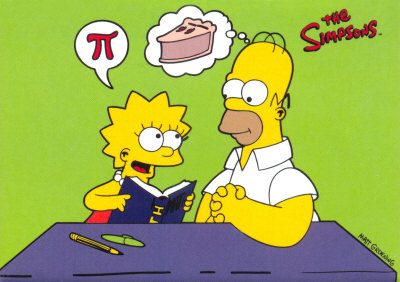
The earliest textual evidence we have of Pi dates back to 1900 B.C. Both the Babylonians and the Egyptians had a rough estimation of the value of Pi. The Babylonians estimation of Pi was about 3.125, while the Egyptians estimated it to be about 3.16. The ancient Greek mathematician Archimedes is widely considered the first to calculate an estimation of the value of Pi. He accomplished this by finding the area of two polygons: the polygon that was inscribed inside a circle, and the polygon in which a circle was circumscribed. Through this he came up with an estimation that the value of Pi was between 3.1408 and 3.14285. This was between 287 and 212 B.C.
Later between 429 and 500 A.D., Chinese mathematician Zhu Chongzhi used a method similar to Archimedes, in which he used a 12,288-sided polygon to approximate the value of Pi, which he came to find out as 355/113 or 3.14159292. It is also interesting to note that in the Bible we can find an approximation of Pi in 1 Kings 7:23. It says And he made a molten sea, ten cubits from the one brim to the other: it was round all about, and his height was five cubits: and a line of thirty cubits did compass it round about. 30 cubits around divided by 10 cubits across approximates to 3, which is very close to Pi.

Later, in the 15th century, an Indian mathematician by the name of Madhavan of Sangamagramam calculated Pi to 11 decimals. From this point on, it was now a competition of who could calculate the most digits of Pi, and there were many mathematicians who pursued in this great challenge. The most accurate calculation of pi before the advent of the computer was by D. F. Ferguson, who calculated pi to 620 digits in 1945. Before this, William Shanks had calculated Pi to 707 digits in 1874, but only 527 of said digits were correct. The invention of computers greatly enhanced our ability to approximate Pi to even more digits. Shigeru Kondo carried out the longest calculation of Pi to date on October 19, 2011. Kondo used Alexander Yees y-cruncher program to calculate Pi to 10 trillion digits, which is a record calculation for both supercomputers and home computers. This record was recently broken in 2019 by Emma Haruka Iwao who calculate Pi to 31 trillion digits. Eventually, this symbol π was being used to denote Pi. The first usage of the Greek letter Pi π was in 1707 by Welsh mathematician William Jones. The symbol did not become widely until 1937 when Swiss mathematician and physicist Leonhard Euler popularized the use of the symbol. The π symbol was taken from the Greek word meaning perimeter.

Since Pi is irrational, it goes on forever. Many people have spent hours on hours memorizing the digits of Pi. The world record for most digits of Pi recited was 70,000 by Ajveer Meena at VIT University, Vellore, India on 21 March 2015. It took him 10 hours to accomplish this. The history of Pi does not stop only at the mathematics. Pi is widely known and used in pop culture today and in the past. First of the most common uses of Pi in todays world is on Pi-Day, which we know as March 14th. On this day, mathematicians, normal people, and geometry classes celebrate this special number by wearing Pi themed items of clothing, participating in Pi themed activities, and most commonly by consuming their favorite pie. There are other examples of Pi showing up in movies and tv shows. The square root of Pi is recited by Edward in the vampire series Twilight.

It also appears in the Simpsons when two young girls at a school for the gifted play patty-cake and say Cross my heart and hope to die, heres the digits that make pi, 3.1415926535897932384. In another scene in the Simpsons, a sign at the Springfield graveyard says Come for the funeral, stay for the Pi.

The main character in Life of Pi nicknames himself after it. Some universities have chants, one example being the MIT Launching Cheer, that include the digits of Pi. There are other occurrences of Pi in pop culture, and all may be able to find occurrences of Pi in their day to day lives.